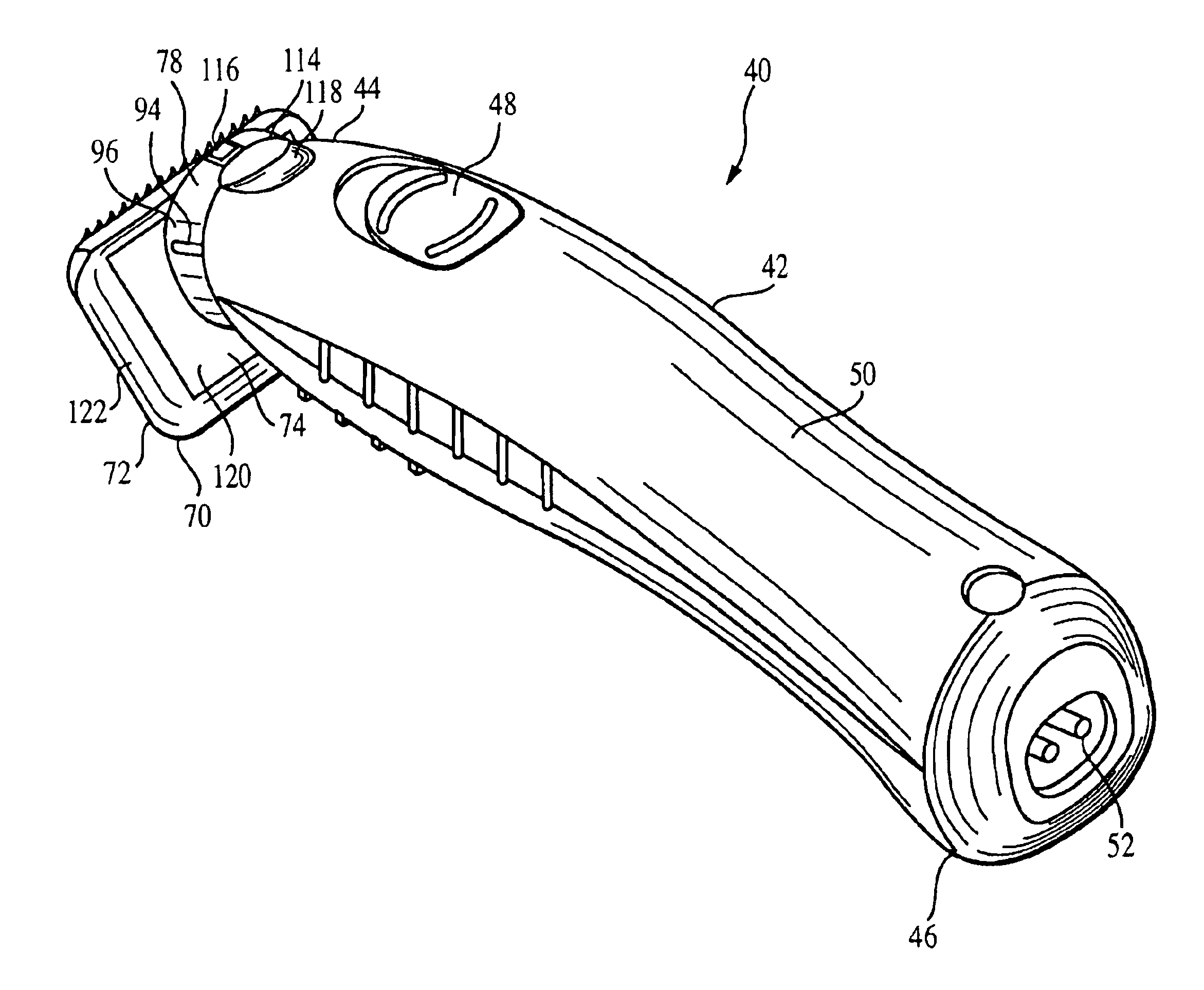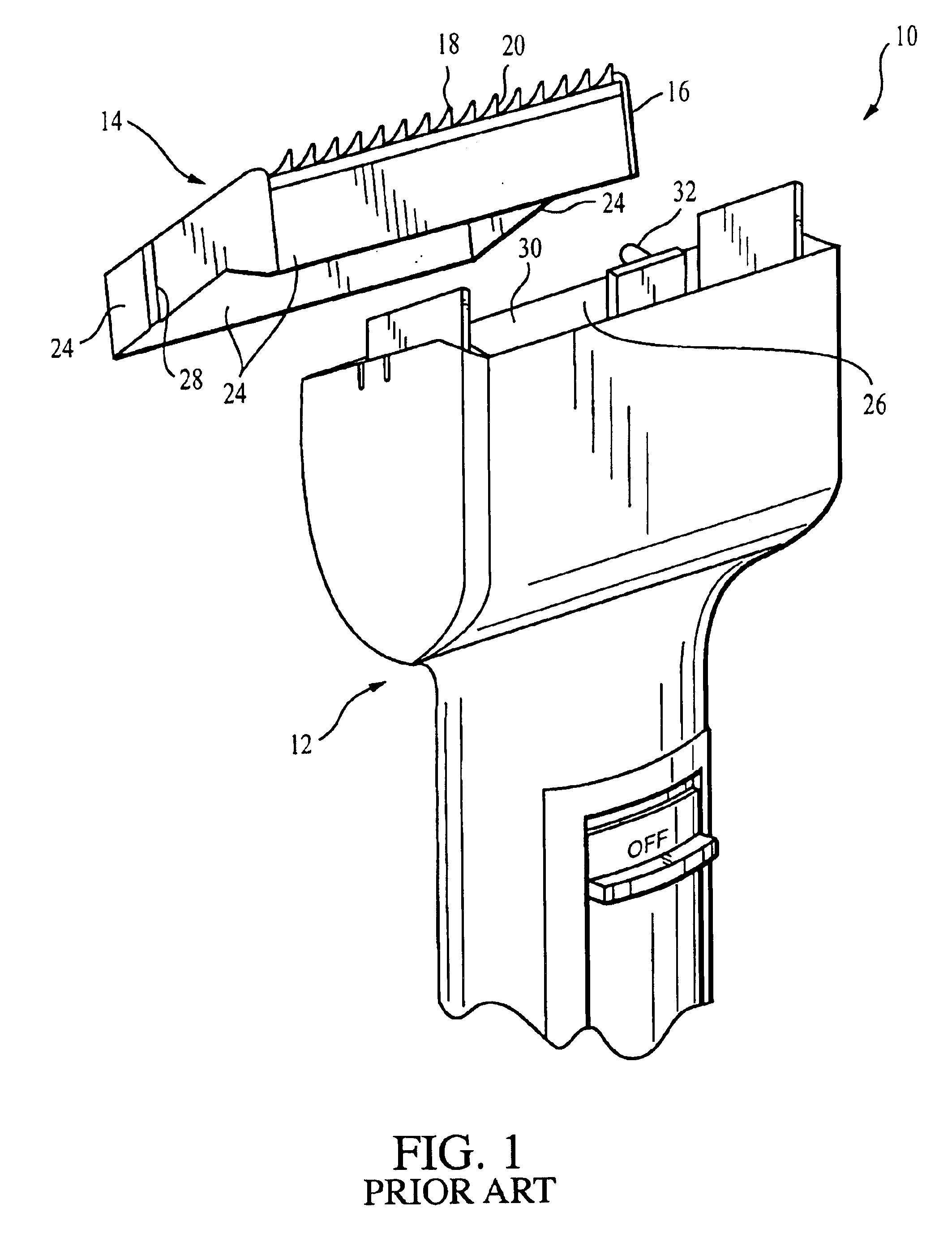Fixed head clipper and disposable blade assembly
a blade assembly and fixed head technology, applied in the direction of metal working devices, etc., can solve the problems of short side portions b>24/b> relative to the blade assembly, and difficult to properly engage the blade assembly on the handle, etc., to achieve quick and easy engagement, easy to eject, and easy to engag
- Summary
- Abstract
- Description
- Claims
- Application Information
AI Technical Summary
Benefits of technology
Problems solved by technology
Method used
Image
Examples
Embodiment Construction
[0021]Referring now to FIGS. 2, 5 and 7, an electric hair clipper of the type suitable for use in the present invention is generally designated 40, and includes a motorized handle portion 42 having a drive end 44, a recharge end 46 opposite the drive end 44, and a switch 48 located therebetween. More specifically, the handle portion 42 includes a housing 50 preferably made of durable, impact-resistant molded polymeric or plastic material as is known in the art.
[0022]Enclosed by the housing 50 is a power source (not shown) which, in the preferred embodiment, is one or more rechargeable batteries, however disposable batteries, or an electric transformer with a power cord connected to an electrical wall outlet, are also contemplated. In the preferred embodiment, terminals 52 for engaging a recharger (not shown) are located at the recharge end 46.
[0023]As can best be seen in FIG. 5, connected to the power source in a known manner is an electric motor 54 which is secured within the housi...
PUM
 Login to View More
Login to View More Abstract
Description
Claims
Application Information
 Login to View More
Login to View More - R&D
- Intellectual Property
- Life Sciences
- Materials
- Tech Scout
- Unparalleled Data Quality
- Higher Quality Content
- 60% Fewer Hallucinations
Browse by: Latest US Patents, China's latest patents, Technical Efficacy Thesaurus, Application Domain, Technology Topic, Popular Technical Reports.
© 2025 PatSnap. All rights reserved.Legal|Privacy policy|Modern Slavery Act Transparency Statement|Sitemap|About US| Contact US: help@patsnap.com



